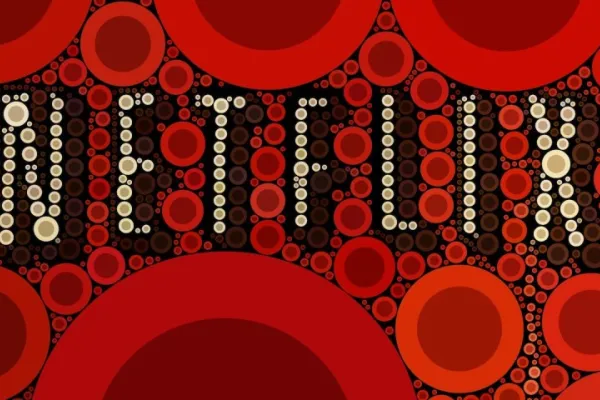 Details
Details
As content marketing matures and brands invest more strategically in visibility, understanding the difference between paid PR and native PR has become essential. While both are forms of paid media, their goals, execution, and impact vary significantly — and knowing which one to choose can make or break your campaign.
Whether you're launching a product, reshaping brand perception, or looking to drive engagement, this guide breaks down what paid PR and native PR are, how they differ, and how to choose the right format in 2025.
Learn more about Native Advertising in our Ultimate Guide for beginners.
What Is Paid PR?
Paid PR refers to sponsored media coverage that is paid for by a brand to appear in a publication. Unlike traditional PR, which relies on media relations and editorial discretion (earned media), paid PR guarantees coverage — often in the form of:
- Sponsored press releases
- Brand mentions in articles
- Event coverage
- Reviews or interviews
These pieces are either created by the brand or by the media outlet based on a client brief. Paid PR gives you control over the message, but you’re generally limited to text-based formats and short-term visibility.
✅ Key benefit: You control the narrative.
❌ Limitation: Paid PR formats are static (mostly articles) and it can feel like an advertorial unless well executed.
What Is Native PR?
Native PR (often used interchangeably with native advertising) refers to sponsored content that matches the look, tone, and style of the platform where it appears. Unlike paid PR, native PR is crafted to blend in with editorial content and provide value to the audience — not just a brand push.
Common formats of native PR include:
- First-person storytelling
- Video series
- Infographics and explainer articles
- Brand-sponsored podcasts
- Microsites or interactive content
In native PR, the publisher often plays a co-creative role, using their editorial expertise to produce content that resonates with their audience.
✅ Key benefit: Deep engagement and flexibility in storytelling formats.
❌ Limitation: Requires more budget and trust in the publisher's creative direction.
RELATED: Content Creation and Distribution: Can't Have One Without the Other
Paid PR vs Native PR: Key Differences
Here’s a side-by-side comparison to help you quickly grasp the difference between paid PR and native PR:
| Feature | Paid PR | Native PR |
|---|---|---|
| Goal | Gain positive brand mentions | Drive engagement and perception shift |
| Content Creation | Brand or agency-led | Collaborative with publisher |
| Format | Press releases, reviews, event coverage | Articles, videos, podcasts, interactive formats |
| Tone | Promotional or neutral | Storytelling, educational, or entertaining |
| Integration | Feels external to editorial | Blends into editorial environment |
| Distribution | Usually one-off placements | Often cross-platform or multi-channel |
| Cost | Lower entry cost | Typically higher investment |
When Should You Use Paid PR?
Paid PR is the right choice when your primary goal is to secure guaranteed media coverage, particularly around specific moments like a product launch, event announcement, or company milestone.
If you need to ensure that your message is published exactly as intended—with no room for editorial interpretation—paid PR gives you that control.
This approach is also ideal when working within tight timelines or limited budgets. Since paid PR placements typically follow a straightforward format, like sponsored press releases or interviews, the content creation process is faster and less resource-intensive compared to a full-scale native campaign.
If your objective is to generate visibility in traditional news environments and secure mentions in reputable outlets, paid PR delivers consistent and predictable outcomes. However, it’s important to recognize its limitations: while paid PR puts your brand in the spotlight, it doesn’t necessarily lead to deep audience engagement or long-term emotional connection. It’s more about awareness than influence.
RELATED: Native Advertising Is Growing at Record-Breaking Pace All Over the World
When Should You Use Native PR?
Native PR, on the other hand, is your best bet when you want to create high-impact, story-driven content that resonates emotionally with your audience. If your campaign goal is to build trust, shift perception, or educate your market, native content offers the flexibility and creative depth to do just that.
Because native PR is embedded within a publisher’s editorial ecosystem, it allows for a wide range of formats—from long-form storytelling and explainers to video interviews, infographics, and interactive content. This makes it a powerful tool when you're aiming to stand out from traditional ads and create meaningful engagement.
You should choose native PR when you’re looking to influence customer behavior, drive purchase intent, or position your brand as a thought leader in a relevant conversation. While it typically involves a greater investment of time, collaboration, and budget, the payoff is often stronger brand lift, increased credibility, and long-term value.
RELATED: How Much Do Native Ads Really Cost?
Why the Confusion Between Paid PR and Native PR?
In emerging markets — and even in some advanced ones — the distinction between paid PR and native PR often gets blurred.
This confusion stems from:
- Both being paid forms of media
- Both offering positive brand exposure
- Some publishers loosely labeling any paid content as “native,” even when it’s just advertorial
But misusing the terms can lead to mismatched expectations, especially when marketers invest in paid PR but expect native-level performance in terms of engagement and storytelling.
ANOTHER READ: How to Leverage Micro-Influencers to Expand Reach and Improve SEO
Each Has Its Own Place in a Content Strategy
Both paid PR and native PR have valuable roles to play in a modern content strategy—but they serve very different purposes. That’s why it’s essential for marketers to clearly understand the distinction between the two before allocating budget or setting expectations.
Using paid PR as a stand-in for native content will likely fall short of your goals, especially if you're expecting deep engagement or brand storytelling impact. Likewise, investing in high-end native content when your only objective is quick press coverage or event visibility is an inefficient use of resources.
As a rule of thumb:
1. If you need media coverage, a controlled message, and fast turnaround, paid PR is your tool.
2. But if your goal is to drive brand lift, influence perception, or inspire action, native PR is the better strategic investment.


